Apple II GS

The Apple IIGS was designed in response to the Amiga 1000 and Atari 520ST computers & could be considered a cross between the Macintosh & Apple II (naturally, it can't use Macintosh programs). It was (and still is) a quantum leap for the Apple II line.
Sales were strong initially and the IIGS even outsold the black and white Macintosh units that were its contemporary. Sadly, Apple wanted Macintosh to be its future. The total number of advertisements and commercials for the IIGS could probably be counted on one hand. If the computer had been introduced a year or two earlier, things might have been different. The Apple IIGS disappeared from the market in 1992.
In one final gasp, the Apple II supporters at Apple designed the Apple IIGS Plus, code named "Mark Twain". It had an 8Mhz 65C816, a built in SuperDrive, 2MB on the motherboard, and a hard drive. Prototypes leaked out and a user group that has one and wrote a series of articles about it. Apple management vetoed this unit.
The Ensoniq chip in the Apple IIGS was a brilliant move by Apple, but it drew a lawsuit from Apple Records, the Beatles' record label. Apple never again put a synthesizer chip in any computer. Even today, the Macintosh does not have hardware synthesizers. The Macintosh works around this by using software-based synthesis.
It had a lot of graphic modes : All modes used a 12-bit palette for 4096 colors.
- 320x200 with 16 colors
- 320x200 with 256 colors: in this mode, the VGC is taking advantage of the fact that it has memory for 16 separate palettes. Each scan line can be assigned any one of these 16 palettes for a total of 256 possible colors. This mode requires no CPU assistance and is often used in games.
- 320x200 with 3200 colors: in this mode, the CPU is used to swap palettes into and out of video memory such that a separate 16 color palette can be used on each of the 200 scan lines for 3200 possible colors. This mode is often used for viewing graphics.
- 640x200 with 4 pure colors: this mode is bland and is not often used.
- 640x200 with 16 dithered colors: in this mode, the pixels in the graphic screen are grouped into even and odd columns. The even columns can have a palette of 4 pure colors out of a of a possible 4096. The odd columns can have a second palette of 4 pure colors. The GS dithers the adjacent colors for 4x4=16 dithered colors. This mode is widely used in productivity programs and also in Apple's Finder for the GS.
- Fill mode: for faster rendering of graphics, fill mode is a hardware mode in which an outline of a graphic can be drawn and the outline filled by a solid color without needing to draw in all the pixels.
Combinations and variations: the Apple IIGS supported scan line interrupts. Part of the screen could be in 640x200 mode while another part could be in 20x200 resolution. Such split modes were sometimes used in paint programs, where the menu bar was in 640x200 while the graphic was in 320x200.
SVGA modes with 24-bit color could be added with an additional video card (see the Second Sight SVGA card at Sequential Systems at http://www.sequential.com/).
The Apple IIGS also had all the graphics modes found on the Apple IIc.
- Text mode: 40x24 and 80x24. Characters are formed by a 7x8 pixel matrix. Text mode is monochrome but can be set to a specific color. The background and border can each be set to different colors. Text mode is rarely used in GS programs since the OS, GS/OS, had a graphic desktop.
- Low Resolution: 40x48 pixels in 16 colors. Double Low Resolution: 80x48 pixels in 16 colors. High Resolution: 280x192 pixels in 6 colors Double High Resolution: 560x192 pixels in 16 colors.
Combinations/Variations: 4 lines of text mode could be mixed with a truncated Low Resolution or High Resolution mode graphic. The text in mixed mode could be either 40 column or 80 column. Double Low Res and Double High Res modes couldn't be mixed with text.
The "SmartPort" external drive port supports both Apple IIe/IIc UniDisks (3.5" and 5.25" models) and Apple IIGS daisy-chain 3.5" drives and Apple 5.25" disks. It was sold with a 3.5" floppy drive which not only worked on this computer, but on the Macintosh as well. It was also designed to support the Chinook CT-series 20MB to 100MB SmartPort hard drives, but Apple IIGS users usually added an SCSI card to the system for faster hard drive access.
The difference between a UniDisk and a IIGS 3.5" drive is that the IIGS drive is controlled directly by the computer while the UniDisk has a separate processor. The UniDisk is thus much slower (up to 4x slower) than a IIGS 3.5" drive.
The SmartPort can support two 800K 3.5" drives, two 140K 5.25" drives, and one 100MB CT100 hard drive simultaneously daisy-chained to each other.
The Apple IIGS often shipped with the Apple High Speed (DMA) SCSI controller in an expansion slot for controlling SCSI devices. Even 100MB Zip Drives and 1 GB Jazz Drives work on this SCSI port. A SuperDrive controller could be added for using 1.44MB high density floppy drives.
(Note: Description used with courtesy of http://www.old-computers.com)
Recent releases:

|
Brutal Deluxe | Sep 2025 | |

|
Brutal Deluxe | Sep 2025 | |
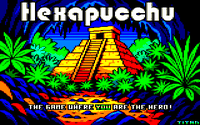
|
Brutal Deluxe | Sep 2025 | |
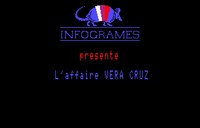
|
Brutal Deluxe | Aug 2025 | |

|
Brutal Deluxe | Aug 2025 | |

|
Brutal Deluxe | May 2025 | |
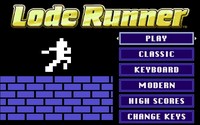
|
Brutal Deluxe | May 2025 | |

|
Brutal Deluxe | Nov 2024 | |

|
Brutal Deluxe | Feb 2024 | |

|
Brutal Deluxe | Jan 2024 | |

|
Brutal Deluxe | Sep 2023 | |

|
Brutal Deluxe | Nov 2022 | |
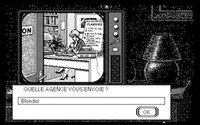
|
Brutal Deluxe | Sep 2022 | |

|
Brutal Deluxe | Aug 2022 | |

|
Brutal Deluxe | Jul 2022 | |

|
Brutal Deluxe | Jun 2022 | |

|
Brutal Deluxe | May 2022 | |
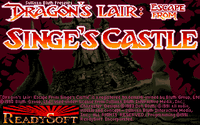
|
Brutal Deluxe | Apr 2022 | |

|
Brutal Deluxe | Mar 2022 | |
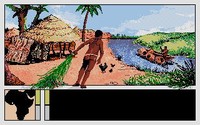
|
Brutal Deluxe | Feb 2022 | |

|
Brutal Deluxe | Jan 2022 | |
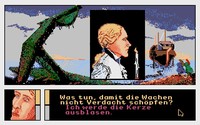
|
Brutal Deluxe | Dec 2021 | |
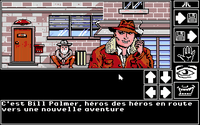
|
Brutal Deluxe | Aug 2021 | |

|
Ninjaforce | Apr 2021 | |

|
g0blinish | Feb 2020 | |

|
Jesse Blue / Transatlantic Lamerz | Jul 2019 | |

|
Ninjaforce | Apr 2017 | |

|
DiGAROK | Sep 2015 | |
|
|
Free Tools Association and Ninjaforce | Jun 2015 | |

|
Ninjaforce | Apr 2015 |